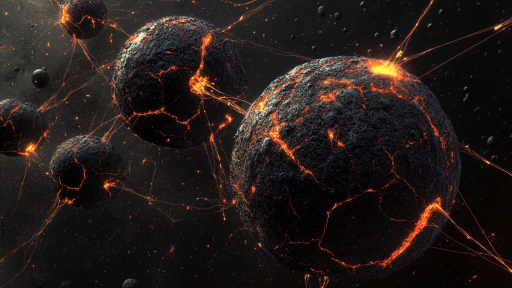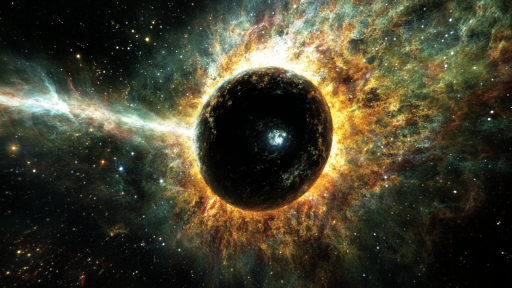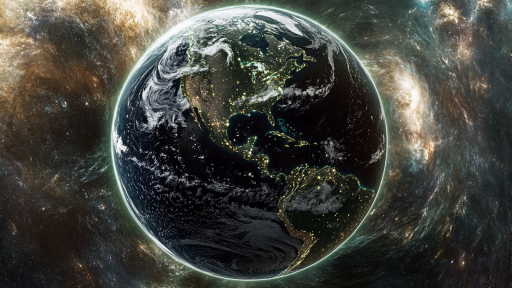
Nature and the cosmos may seem like separate realms, but they are deeply intertwined in ways that challenge our understanding of both. From earthly phenomena shaped by cosmic forces to uncanny patterns that mirror the vastness of space, these connections are as startling as they are awe-inspiring. Whether through the influence of celestial bodies, microscopic structures mimicking galaxies, or life forms thriving in extreme conditions, the universe is written into the fabric of our world. The deeper we look, the more we realize that nature and outer space are not so different after all.
The Cosmic DNA of Life

The elements that form our bodies—carbon, oxygen, nitrogen—were forged in the fiery deaths of ancient stars. Every atom in our cells was once part of an exploding supernova, scattering the building blocks of life across the universe. This means that all living things, from humans to the tiniest microbes, are literally made of stardust. The connection between the cosmos and life itself is embedded in our very existence.
The Aurora Borealis and Solar Storms

The breathtaking northern and southern lights are more than just a dazzling display—they’re direct evidence of space weather interacting with Earth. Charged particles from the sun collide with our planet’s magnetic field, creating glowing waves of color in the sky. These same solar storms can disrupt satellites, power grids, and even animal navigation. What seems like a mystical light show is actually the Earth responding to powerful cosmic forces.
The Moon’s Grip on Life

The moon’s gravitational pull shapes Earth’s tides, but its influence doesn’t stop at the ocean. Many animals, from coral reefs to wolves, synchronize their behaviors with lunar cycles. Some scientists believe even human sleep patterns and moods may be affected by the phases of the moon. This celestial neighbor quietly guides the rhythms of life in ways we are only beginning to understand.
Plants That Follow the Sun

Sunflowers and other heliotropic plants move in sync with the sun’s path across the sky. This behavior, known as phototropism, is a direct response to solar energy, helping plants maximize their growth and survival. On a much larger scale, Earth itself orbits the sun, locked in an endless cosmic dance. These simple flowers remind us that life on Earth is intimately linked to the movements of celestial bodies.
Deep-Sea Life Thrives Like Alien Worlds

The strange creatures of Earth’s deep oceans may hold the key to understanding extraterrestrial life. In the darkest, most extreme environments—where no sunlight reaches—organisms survive by harnessing energy from hydrothermal vents, much like life might exist beneath the icy crust of Jupiter’s moon Europa. Studying these deep-sea ecosystems could offer a glimpse into the kinds of life that might thrive beyond Earth.
The Fibonacci Sequence in Nature and Space

The spirals of galaxies mirror the natural design found in sunflowers, pinecones, and hurricanes. This pattern, known as the Fibonacci sequence, is a mathematical ratio that appears both in nature and in the structure of the cosmos. It suggests that the same fundamental principles govern everything from the growth of plants to the formation of galaxies. The universe seems to follow a hidden code that connects the smallest organisms to the vastest expanses.
Meteorites and the Origins of Water

Scientists believe some of Earth’s water may have come from ancient meteorites and comets. These celestial objects carried ice that, upon impact, melted and contributed to Earth’s oceans. If this theory holds true, then the water we drink and the oceans we swim in have extraterrestrial origins. The presence of water in space also raises the possibility that life could exist beyond Earth.
Animals That Navigate Using the Stars

While humans have long used the stars for navigation, some animals are natural-born astronomers. Birds, seals, and even dung beetles use celestial cues to find their way across vast distances. The indigo bunting, for example, orients itself using the position of the Milky Way. These creatures show that nature has evolved to be in tune with the vast cosmic map above.
The Strange Case of Space Mushrooms

Some fungi on Earth have an eerie resilience to space conditions. Certain species, like Cryptococcus neoformans, thrive in radioactive environments, leading scientists to study their potential survival in space. Some even speculate that fungal spores could travel between planets, carrying life across the cosmos. If true, mushrooms might be one of the best candidates for surviving extraterrestrial journeys.
Lightning’s Cosmic Connection

The flashes of lightning we see during storms are not just Earthly events—they have ties to cosmic radiation. High-energy particles from deep space collide with our atmosphere, triggering lightning strikes. Scientists are still unraveling the exact relationship, but these findings suggest that storms on Earth may be influenced by forces originating from distant galaxies.
The Earth’s Magnetic Field and Cosmic Radiation

Earth’s magnetic field acts as a protective shield against deadly cosmic radiation. Without it, solar and cosmic rays would bombard our planet, stripping away the atmosphere and making life impossible. Some believe studying this field could also help us understand how other planets, like Mars, lost their atmospheres. This unseen cosmic barrier is one of the most crucial factors allowing life to exist.
Alien Landscapes on Earth

Certain places on Earth look eerily like otherworldly planets. From the desolate Atacama Desert in Chile to the acidic lakes of Ethiopia’s Danakil Depression, these landscapes mimic conditions found on Mars or Venus. NASA often tests rovers and space suits in these locations to prepare for future interplanetary missions. Sometimes, you don’t have to leave Earth to feel like you’re walking on another world.
The Cosmic Cycle of Extinction and Renewal

Mass extinctions on Earth have been linked to cosmic events, such as asteroid impacts and supernova explosions. Yet, these same events also create opportunities for new life to emerge and evolve. The dinosaurs’ demise, for example, paved the way for mammals to dominate the planet. Cosmic destruction and creation are part of the grand cycle that has shaped life on Earth.
The Universe Within

Nature and space are not separate—they are reflections of the same cosmic story. The patterns, forces, and materials that govern the universe also shape life on Earth. Each discovery deepens our connection to the vast unknown, revealing that the mysteries of the cosmos are written into the world around us. The next time you look at the night sky, remember: the universe isn’t just out there—it’s within us, too.





